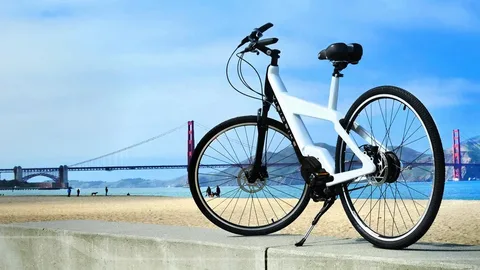LDPE, also known as Low-Density Polyethylene bags, has become essential to our daily lives. These versatile bags are used in various industries, from retail to healthcare, due to their flexibility, durability, and cost-effectiveness. This blog post will explore LDPE Plastic Bags, studying their composition, properties, uses, advantages, environmental impact, innovations, regulatory impacts, and future trends.
Understanding LDPE: Composition and Properties
Low-density polyethylene, or LDPE, is a thermoplastic polymer that forms the cornerstone of various packaging solutions, including LDPE. Crafted from the monomer ethylene via a high-pressure process, it stands out for its unique molecular configuration, characterised by its long branching chains. This distinctive structural aspect imbues LDPE with its celebrated flexibility and softness, critical for applications demanding high malleability.
One of the key properties of LDPE is its remarkable resistance to impact, moisture, and chemicals, making it an excellent candidate for safeguarding products from environmental factors. Moreover, its inherent transparency allows for the easy identification of contents, a feature particularly appreciated in the retail and medical sectors for enhancing user convenience. Despite its flexibility, LDPE maintains a respectable degree of toughness and tensile strength, allowing it to withstand handling and transport without compromising integrity.
Environmental resilience complements LDPE’s physical properties, demonstrating a commendable resistance to low temperatures. This characteristic ensures that LDPEs remain functional in various storage conditions, further broadening their applicability across diverse sectors. Through these features, LDPE emerges as a multifaceted material, tailored for contemporary packaging needs.
The Multifaceted Uses of LDPE in Various Industries
LDPE plays a pivotal role across various industries, underpinning its versatility and widespread appeal.
Resilience
Retailers’ robustness and resilience to tearing make them an ideal choice for shoppers, ensuring goods are transported safely. The food industry benefits significantly from their use, with LDPE providing a hygienic and practical solution for packaging various food items, from fresh produce to frozen goods, thus aiding in preserving freshness and extending shelf life.
Security
Within the pharmaceutical realm, these bags offer a secure and contaminant-free environment for storing and transporting medications and medical supplies, which is necessary for maintaining the integrity of health-related products.
Adaptability
Their adaptability also extends to the agricultural sector, where LDPE protect plants and seeds from the elements, thereby supporting the cultivation process. The electronics industry, too, leverages the anti-static versions of these bags to safeguard sensitive components from electrostatic discharge, highlighting the material’s ability to be customised to meet specific industry requirements. This bespoke functionality demonstrates the far-reaching applicability of LDPE, making them indispensable in both conventional and specialised sectors.
Advantages of Using LDPE for Businesses
LDPE offers numerous benefits for businesses, primarily highlighting their cost-effectiveness, which is a crucial factor in maintaining competitive advantage.
Cost-effective
The production process of LDPE is cost-effective, making them a financially viable option for a wide array of businesses. Furthermore, their lightweight nature contributes to lower transportation costs, a significant advantage for companies optimising their distribution and logistics strategies.
Protection
Another significant benefit is the protection these bags provide to products. They are adept at guarding against moisture, dust, and other environmental factors, ensuring the integrity of the product remains intact from warehouse to customer. This feature is particularly beneficial for industries where product preservation is paramount, such as food, pharmaceuticals, and electronics.
Versatility
Moreover, LDPE’s versatility and adaptability mean it can be tailored to specific business needs, whether custom sizes, thicknesses, or even the incorporation of branding elements. This adaptability not only enhances the packaging’s functionality but also serves as a marketing tool, allowing businesses to promote their brand through customised packaging solutions. These facets underscore the strategic advantages LDPE presents to companies, contributing to operational efficiencies and customer satisfaction.
Environmental Impact: Debunking Myths About LDPE
The perception that LDPE inherently contributes negatively to our environment is a widespread myth that requires dispelling. Contrary to common belief, when appropriately managed, these bags offer a recycling pathway that diminishes their ecological footprint. Advances in recycling technologies have facilitated the inclusion of LDPE materials in circular economy models, where they are efficiently repurposed into new products, thus mitigating waste.
Furthermore, LDPE production is inherently more energy-efficient compared to several alternatives, requiring less raw materials and energy consumption. This efficiency translates into a reduced carbon footprint throughout the bag’s lifecycle. It is imperative to acknowledge that the environmental viability of LDPE hinges significantly on consumer behaviour and systemic recycling practices. By fostering an informed consumer base and investing in robust recycling infrastructure, the potential for LDPE to serve as a sustainable packaging solution is markedly enhanced.
Efforts are continuously being made to increase the recyclability of LDPE, with many communities and businesses adopting strategies to ensure these bags are not only reused but also recycled effectively. Through such concerted efforts, the narrative surrounding LDPEs and their environmental impact is gradually shifting, paving the way for their responsible use and management within our ecosystems.
Innovations in LDPE Bag Manufacturing and Recycling
The LDPE bag manufacturing and recycling landscape is transforming, with groundbreaking innovations spearheading the march towards sustainability. Modern manufacturing processes now heavily incorporate post-consumer recycled content, significantly diminishing the dependency on virgin polyethylene. This not only enhances the eco-friendliness of LDPE but also elevates its appeal in an increasingly environmentally conscious market.
Emerging recycling technologies are streamlining the reclamation of LDPE materials, presenting a beacon of hope for the circular economy. Chemical recycling stands out, offering a method to break down LDPE to its molecular level, thereby enabling the creation of new plastic products without degradation in quality. This technology promises a leap towards zero waste, facilitating the reuse of LDPE materials in an infinite loop.
Simultaneously, initiatives aimed at improving the sorting and collection of LDPE are gaining traction. Innovative identification and sorting technologies, such as near-infrared (NIR) spectroscopy, are being employed to accurately segregate LDPE materials, thus improving the efficiency and effectiveness of recycling programmes. These concerted efforts signify a robust commitment to advancing the sustainability of LDPE, ensuring their role as a viable solution in eco-friendly packaging.
How LDPE Compare to Other Plastic Bags
Several distinguishing factors become evident when assessing the differences between LDPE and other plastic bag types. LDPE excels in its inherent flexibility and softness, characteristics that are less pronounced in High-Density Polyethylene (HDPE) bags, which are known for their rigidity and strength. This makes LDPE particularly suitable for applications requiring a gentle touch and adaptability, such as the wrapping of delicate items or packaging that moulds to the shape of its contents.
Another notable comparison is with Polypropylene (PP) bags, which, although durable and tearing-resistant, do not offer the same level of clarity as LDPE. The translucency of LDPE is a beneficial trait for retail packaging, where visual inspection of the product without opening the package is desired. This transparency supports consumer convenience and enhances the shopping experience.
LDPE typically has a lower melting point than other plastics, which can be an advantage in certain manufacturing and recycling processes. This allows for easier reprocessing and moulding without degrading material quality. This aspect, coupled with ongoing innovations in recycling, positions LDPE as a practical choice in the landscape of sustainable packaging solutions, balancing utility with environmental considerations.
Regulatory Impacts on the Use of LDPE Plastic Bags Worldwide
Across the world, governments are implementing various legislative measures aimed at reducing the prevalence of single-use LDPE Plastic Bags in response to the growing pressures of environmental degradation and plastic waste accumulation. In certain jurisdictions, outright bans on LDPE have been put in place, forcing businesses and consumers alike to switch to more sustainable alternatives, such as cloth or paper bags. Elsewhere, financial disincentives in the form of taxes or charges on LDPE discourage their widespread use, promoting a cultural shift towards reusable options.
These regulatory frameworks have led to a noticeable decrease in LDPE bag consumption and encouraged innovation within the packaging industry. Companies are increasingly investing in research and development of more environmentally friendly materials, including biodegradable and compostable alternatives, to meet legislative demands and consumer expectations for sustainability. Furthermore, the regulatory landscape is constantly evolving, with some regions considering or already implementing policies that require increased recycled content in LDPE, further driving the move towards a circular economy ethos.
Therefore, the global regulatory environment significantly impacts the market dynamics for LDPE, shaping the direction for future developments in material science, waste management practices, and consumer behaviour.
The Future of LDPE: Trends and Predictions
The trajectory of LDPE is firmly aligned with the global shift towards sustainability, marking a pivotal period of adaptation and innovation. The increasing focus on recyclability and the minimisation of environmental impact are set to dominate the industry’s agenda. Efforts are intensifying to enhance the efficiency of recycling processes for LDPE materials and foster a more circular economy. This includes exploring novel avenues for increasing the content of post-consumer recycled material in producing new LDPE, thereby reducing the dependency on virgin polyethylene.
Another significant trend is the rise of bio-based LDPE alternatives. These are manufactured from renewable resources, offering a promising reduction in carbon footprint and contributing to a more sustainable lifecycle. The exploration and adoption of such materials are expected to accelerate, driven by consumer demand for greener packaging options and bolstered by advancements in biotechnology.
Regulatory pressures and consumer expectations are also encouraging the packaging industry to innovate. As a result, the next generation of LDPE will likely embody enhanced environmental attributes, including improved recyclability, biodegradability, and the integration of renewable materials. These developments will respond to the growing ecological concerns and align with the evolving market dynamics and legislative landscapes, shaping the future of LDPE packaging.
Conclusion
LDPE Plastic Bags possess a dynamic and indispensable role within the panorama of plastic packaging, offering extensive benefits across many industries. Their inherent characteristics, such as durability, flexibility, and cost-effectiveness, make them attractive for businesses seeking efficient packaging solutions. The advancements in the manufacturing and recycling of LDPE spotlight the potential for these materials to adapt to the increasing demands for sustainability and environmental stewardship.
FAQ’s
Are LDPE Plastic Bags recyclable?
A1: Yes, LDPE Plastic Bags are recyclable. They can be processed and repurposed into new products, contributing to a circular economy. Enhancing recycling technologies, such as chemical recycling, improves sustainability.
How does LDPE impact the environment?
A2: The environmental impact of LDPE depends significantly on consumer behaviour and recycling practices. While they can be energy-efficient to produce and are recyclable, improper disposal can lead to environmental harm. Recycling and responsible use are key to mitigating their ecological footprint.
What are the advantages of using LDPE over other types of plastic bags?
A3: LDPE offers superior flexibility and softness, making it ideal for a range of applications that require a gentle touch. It also provides excellent moisture and chemical resistance and is cost-effective for businesses due to its lightweight nature and low transportation costs.
Can LDPE be used for food packaging?
A4: Absolutely. LDPE is widely used in the food industry due to its hygienic properties, which help preserve freshness and extend the shelf life of various food items.

